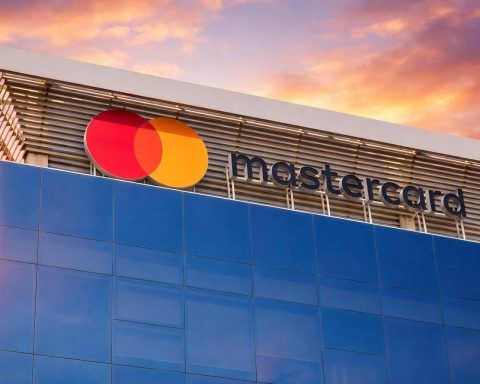- Deloitte forecasts global data center electricity use will nearly double from about 536 TWh in 2025 to over 1,000 TWh by 2030.
- S&P Global projects U.S. data center power demand rising about 12% annually through 2030, with roughly 60% of new demand potentially met by natural gas.
- Germany passed the Energy Efficiency Act (EnEFG) requiring 100% renewable energy by 2027 for all data centers, a PUE of 1.2 or better for facilities operational from July 2026, at least 10% energy reuse, and an energy or environmental management system by July 1, 2025.
- Effective July 1, 2025, any data center hosting federal government workloads in Australia must meet a minimum 5-star NABERS energy rating (roughly a PUE of 1.4 or lower), with the Net Zero Operations Strategy committing to 100% renewable electricity for its own operations by 2025.
- In May 2025, President Donald Trump signed orders to accelerate nuclear power plant construction to power industry needs, while Constellation Energy announced its Three Mile Island Unit 1 restart is targeting 2027 to supply Microsoft data centers.
- Meta celebrated the groundbreaking of Missouri’s Kelso 1 and 2 solar farms totaling 430 MW for Meta data centers, while Google teamed with Intersect Power on a co-located renewables plan backed by an $800 million financing round to support future Google data centers.
- Redwood Materials and Crusoe Energy unveiled the world’s largest deployment of recycled EV batteries powering a data center, a 12 MW, 63 MWh battery energy storage system at Redwood’s Nevada campus powering a 2,000-GPU Crusoe/OpenAI Stargate facility.
- AWS rolled out a custom direct-to-chip liquid cooling system in 11 months for high-density AI racks, achieving roughly 900× heat-transfer density and deployment at scale, while immersion cooling is approaching an inflection point with up to 30% energy savings and DeepMind AI has cut cooling electricity by 10–20% in Google data centers.
- Vertiv launched the TimberMod modular data center design in 2023 using sustainably harvested timber, and Microsoft has disclosed mass timber use in new data centers, with Sweden’s EcoDataCenter exemplifying wooden facilities.
- In 2025, best-in-class hyperscale data centers are achieving annual PUE around 1.10–1.15, the global average PUE sits near 1.57, and Denmark’s Facebook Odense data center expanded heat recovery to heat about 11,000 homes while Google’s European facilities raise server inlet temperatures to 27–30°C for district heating.
Overview and Rising Demand
The period of June–July 2025 saw significant global developments in green data center efficiency amid surging demand from cloud and AI services. Analysts warn that the rapid growth of artificial intelligence workloads is driving data center power usage to new heights, straining electrical grids and complicating sustainability efforts Datacenterfrontier Datacenterfrontier. Deloitte forecasted global data center electricity consumption to nearly double from ~536 TWh in 2025 to over 1,000 TWh by 2030 Datacenterfrontier. Similarly, S&P Global projected U.S. data center power demand rising ~12% annually through 2030 – growth that could double the sector’s carbon emissions as roughly 60% of new demand may be met by natural gas under current renewable buildout rates Datacenterfrontier. Industry experts have dubbed this a potential “climate strategy crisis,” where data center expansion outpaces Big Tech’s net-zero goals Datacenterfrontier. A BloombergNEF report highlighted that data centers already consumed about 1.4% of global electricity supply in 2024 Datacenterknowledge, a share poised to climb further.
At the same time, environmental scrutiny and regulatory pressures are mounting. In some regions, authorities have paused or limited data center growth to manage energy use. For example, Ireland’s government halted new data center builds around Dublin until 2028 to protect grid stability Datacenterfrontier. Amsterdam continues a moratorium on new facilities in certain areas Datacenterfrontier, while Singapore lifted its capacity freeze only under strict sustainability conditions (e.g. favoring operators using green power) Datacenterfrontier. Local communities are also pushing back; rapid data center expansion in places like Atlanta has drawn criticism for competing with other needs (land, housing, power), prompting zoning interventions Datacenterfrontier. As one expert observed at a recent Washington D.C. Climate Week event, sustainability is now “the elephant in the room with AI” – with AI data centers “competing directly with humans for land and water and energy” Esgdive. In short, the industry faces a dual challenge in mid-2025: meet skyrocketing digital demand while aggressively improving energy efficiency and sustainability.
Government & Regulatory Initiatives for Efficiency
Multiple governments and regulators rolled out new policies in June–July 2025 to curb data centers’ environmental impact and enforce efficiency:
- Germany enacted a landmark Energy Efficiency Act (EnEFG) – the first to implement the EU’s latest directives – setting stringent targets for data centers. The law mandates 100% renewable energy usage by 2027 for all data centers Gresb. It also requires that any new facilities operational from July 2026 achieve an ultra-low Power Usage Effectiveness (PUE) of 1.2 or better Gresb, and attain at least 10% energy reuse (ERF) (e.g. reusing waste heat) Gresb. Additionally, all data center operators must implement an energy or environmental management system by July 1, 2025 (with large operators needing certified systems by 2026) Gresb. Germany’s move – pushing renewable power and efficiency standards – is expected to “serve as a blueprint” across Europe Gresb as other nations follow with similar rules.
- Australia introduced new efficiency mandates to support its net-zero goals amid a data center construction boom. Effective July 1, 2025, any data center (public or private) hosting federal government workloads must maintain a minimum 5-star NABERS energy rating Dentons. This expands earlier requirements (which had applied only to certain contractors) into a broad baseline for federal IT procurement Dentons. The 5-star standard – roughly equivalent to a PUE around 1.4 or lower – is fast becoming de facto industry practice in Australia Dentons Dentons. Where full compliance isn’t technically feasible, operators must still optimize energy use, and non-compliant providers risk removal from government panels Dentons. This comes as Australian data centers already consume ~5% of national electricity (2024) and are forecast to reach 8% by 2030, prompting policies to ensure growth doesn’t derail climate targets Dentons. The government’s Net Zero Operations Strategy also commits to sourcing 100% renewable electricity for its own operations (including data centers) by 2025 Dentons.
- United States policymakers showed support for clean energy to power data centers. In May 2025, President Donald Trump signed orders aiming to accelerate nuclear power plant construction – part of a broader push to bolster carbon-free energy capacity for industry needs Datacenterknowledge. This aligns with booming U.S. interest in nuclear energy, driven in part by the “growing need for electricity to power data centers”, as noted by Bloomberg Datacenterknowledge. New York State announced plans for a new reactor, and efforts are underway to restart retired nuclear plants (e.g. Palisades in Michigan) to meet surging demand Datacenterknowledge. These initiatives reflect a view that nuclear, alongside renewables, will play a role in providing stable, carbon-free power for future high-density computing facilities. Notably, Microsoft has partnered on one such project – the iconic Three Mile Island plant in Pennsylvania – to secure nuclear power for its data centers (see below).
- Other Regions: In the Netherlands, the government’s environment ministry advanced proposals to tighten energy efficiency and waste-heat reuse requirements for data centers, building on the EU’s Climate Neutral Data Center Pact (though formal regulation is pending). Singapore, as mentioned, resumed data center growth but under caps and sustainability criteria, given that over 90% of its grid is gas-fired Datacenterfrontier. Canada and some U.S. states explored imposing “mega-load” connection standards, ensuring large data centers invest in grid upgrades or energy storage to mitigate their impact Dentons. And at the city level, power-hungry AI data center projects are now often subject to special review: for instance, Santa Clara, CA (in Silicon Valley) continued its temporary ban on new data centers that don’t meet strict efficiency and renewable benchmarks, due to capacity constraints on the local grid. Across the board, regulators are signaling that energy efficiency, renewable integration, and grid-friendly operation are no longer optional for data centers – they’re becoming mandatory.
Renewable Energy and Clean Power Solutions
A clear theme in mid-2025 is the drive to power new data centers with dedicated clean energy sources – from solar farms and batteries to nuclear reactors – to both cut carbon and alleviate grid strain:
- Battery Microgrids & Reused Energy: In a breakthrough for sustainable power, Redwood Materials and Crusoe Energy unveiled the world’s largest deployment of recycled batteries powering a data center. Launched in late June, the 12 MW system at Redwood’s Nevada campus uses hundreds of repurposed EV batteries to form a massive battery energy storage system (BESS) Datacenterknowledge Datacenterknowledge. The BESS, combined with on-site solar panels, can provide 63 MWh of capacity – enough to power ~9,000 homes – making it the largest microgrid in North America according to Redwood Datacenterknowledge Datacenterknowledge. This microgrid supports a 2,000-GPU high-performance computing data center operated by Crusoe (part of OpenAI’s Project Stargate) entirely on cleaner, stored energy Datacenterknowledge Datacenterknowledge. “Think of this almost like a retirement home for these batteries,” said Redwood’s COO, noting the used EV packs still have plenty of life for stationary storage Datacenterknowledge. By giving batteries a second life, Redwood says the system cost is half that of new lithium-ion units yet delivers the same performance Datacenterknowledge. This approach helps smooth renewable supply (storing solar/wind for later use) and avoids drawing from the grid during peak times Datacenterknowledge. Buoyed by this success, Redwood’s founder JB Straubel (former Tesla CTO) announced plans for projects “20 to 100 times larger” in the pipeline Datacenterknowledge, and the company expects significant growth in its energy storage deployments in the latter half of 2025 Datacenterknowledge. Reused battery microgrids thus emerged as a viable green solution to power data centers, reducing both waste and reliance on fossil backup generators Datacenterknowledge Datacenterknowledge.
- Nuclear Power for Data Centers: A notable development is the revival of nuclear plants to feed data center energy needs. In June, Constellation Energy confirmed its project to restart the Three Mile Island Unit 1 reactor (shut down in 2019) is ahead of schedule, now aiming for power generation as early as 2027 Datacenterknowledge Datacenterknowledge (versus the original 2028 timeline). Once online, the plant – renamed the Crane Power Station – will deliver carbon-free electricity directly to Microsoft’s data centers under a supply agreement Datacenterknowledge. Microsoft’s growing AI cloud capacity has driven a keen interest in reliable clean power, and nuclear offers 24/7 stability. This trend isn’t isolated: across the U.S., “interest in nuclear energy is booming, driven by the need to power data centers, factories, and electrified homes” Datacenterknowledge. Besides Three Mile Island, efforts are underway to restart Michigan’s Palisades reactor and to deploy small modular reactors (SMRs) in data center hubs. Industry analysts predict that nuclear could supply ~10% of data center electricity by 2035 Trellis. Tech giants are increasingly backing these initiatives – Amazon, Google, Meta, and Microsoft all have exploratory investments or partnerships in next-gen nuclear power projects Cloudcomputing News, seeing it as a path to meeting their 24×7 carbon-free energy goals. The accelerated reopening of Three Mile Island, aided by policy support Datacenterknowledge, underscores how data center demand is directly influencing energy infrastructure decisions, resurrecting assets once considered economically unviable for lack of demand.
- Hyperscalers Pairing Data Centers with New Renewables: Major cloud providers continued to invest heavily in dedicated renewable energy projects to power their expanding server farms. In late June, Meta (Facebook’s parent) celebrated the groundbreaking of Missouri’s first utility-scale solar farms, Kelso 1 and 2, which will provide 430 MW of solar power exclusively for Meta’s data center operations under a long-term agreement Datacenterknowledge. Meanwhile, Google announced a novel partnership with energy developer Intersect Power to co-locate clean power generation with future Google data center campuses. In an $800 million financing round (led by TPG’s climate fund) disclosed in July, Google joined as an investor to ensure that Intersect builds renewable capacity “purpose-built and right-sized for the data center” Powermag. Under this model, new Google data centers would come online in tandem with their own dedicated solar, wind, and battery installations, rather than burdening the existing grid Powermag Powermag. “Bringing new generation capacity to the grid to meet our load, reduce time to operation and improve grid reliability,” is the goal, Google stated Powermag. Google’s Head of Data Center Energy, Amanda Peterson Corio, noted that the scale of AI growth is an opportunity to “completely rethink data center development” by synchronizing it with carbon-free power supply from day one Powermag. This “energy park” approach – exemplified by Intersect’s first project in Texas (a planned campus with 340 MW solar + 460 MW wind tied to an industrial park for data centers and electrolysis) – could be replicated in multiple regions to ensure AI data centers are powered by new green energy, not consuming scarce existing renewables Powermag Powermag. These initiatives highlight a broader trend: hyperscale operators are increasingly becoming energy developers themselves (or partnering closely with them) to guarantee a supply of clean power for their facilities.
- Other Renewable Efforts: Across the industry, renewable Power Purchase Agreements (PPAs) and on-site generation continued at pace. Amazon, which had already reached ~85% renewable usage by 2024, announced new solar and wind projects in the U.S. and Europe aimed at powering upcoming AWS regions. Microsoft expanded its portfolio of PPAs, including wind farms in the Netherlands and hydro contracts in Sweden, to progress toward its 100% renewable by 2025 target. Energy storage is also being adopted alongside renewables: beyond Redwood’s batteries, operators like Equinix and Digital Realty began piloting large-scale battery systems at data center sites to provide backup power and frequency regulation in lieu of diesel generators (improving sustainability and grid support). And in an experimental vein, hydrogen fuel cell backups saw continued trials – Microsoft reported successful multi-day tests of a 3 MW hydrogen generator in June, moving closer to replacing diesel gensets with zero-emission alternatives in its data centers. In summary, the mid-2025 landscape shows unprecedented investment in green power integration for data centers, spanning solar, wind, batteries, hydrogen, and nuclear – all in service of decarbonizing the digital infrastructure.
Innovations in Cooling and Infrastructure Efficiency
To complement cleaner power, companies are also innovating inside the data center – reengineering cooling, materials, and designs for greater efficiency and lower carbon footprint:
- Liquid Cooling at Scale: In June, Amazon Web Services (AWS) revealed it developed a custom liquid-cooling solution in just 11 months and has begun rolling it out across certain data centers Aboutamazon Aboutamazon. The move comes as ultra-powerful AI chips (for training large AI models) are packed more densely together to reduce latency – a setup that yields better performance but generates far more heat Aboutamazon Aboutamazon. AWS’s engineers found that air cooling alone is no longer practical or economical for these high-density racks Aboutamazon. “We’ve crossed a threshold where it becomes more economical to use liquid cooling to extract the heat,” explained Dave Klusas, AWS’s head of data center cooling Aboutamazon. Liquid (with its ~900× higher density than air) can carry away heat much more efficiently Aboutamazon, allowing servers to run cooler with less energy. Because off-the-shelf liquid cooling kits didn’t meet AWS’s scale needs, the company designed a bespoke direct-to-chip cooling system – including custom cold-plate assemblies and pump racks. A key innovation is AWS’s in-house coolant distribution unit, which is “more powerful and more efficient than its off-the-shelf competitors”, purpose-built to maximize flow and minimize energy use Aboutamazon. “By focusing specifically on our problem, we were able to optimize for lower cost, greater efficiency, and higher capacity,” Klusas noted Aboutamazon. After successful pilots, AWS’s system is now being deployed at scale in new AI infrastructure Aboutamazon. Other cloud providers are following suit – Meta and Microsoft have also invested in liquid-cooled designs for AI gear. Industry-wide, analysts project an explosion in liquid cooling adoption: the global data center liquid cooling market is expected to grow from ~$5 billion in 2024 to over $20 billion by 2030 Datacenterfrontier Datacenterfrontier. Direct-to-chip liquid cooling is leading the way (even NVIDIA now ships certain AI servers with liquid-cooled plates standard), while immersive cooling (submerging servers in dielectric fluid) is nearing an “inflection point” for broader use Datacenterfrontier Datacenterfrontier. Immersion cooling has been shown to reduce data center energy consumption by up to 30% by eliminating most fan use and improving heat transfer Datacenterfrontier. It also facilitates waste-heat capture (since warm liquid can be pumped to heat exchangers), supporting sustainability goals Datacenterfrontier. Although immersion systems require hardware modifications and carry higher upfront cost, their efficiency gains are increasingly attractive as companies face pressure to lower PUE and water usage Datacenterfrontier Datacenterfrontier. 2025 is seeing liquid cooling move from niche to mainstream, becoming “table stakes” for new high-performance deployments Datacenterfrontier Datacenterfrontier, especially as traditional air cooling hits its limits in the age of AI.
- Smarter Air Cooling and Heat Reuse: Even for facilities that remain air-cooled, new techniques are improving efficiency. Many data centers in temperate climates are adopting “free cooling” designs that use outside air or evaporative cooling for a majority of the year, minimizing chiller operation. For example, a June report profiled a Norwegian data center that uses fjord water to chill its servers, achieving a PUE below 1.15. Elsewhere, waste-heat reutilization is gaining traction: in Denmark, Facebook’s Odense data center continued to expand its heat recovery project in June, now supplying warmth to 11,000 local homes by capturing server exhaust heat and pumping it into the municipal heating network. Such heat reuse is even becoming part of regulations (as seen in Germany’s 10% ERF requirement) Gresb. To facilitate this, companies are experimenting with higher server inlet temperatures – essentially running data halls hotter so that “waste” heat is more usable. Google, for instance, disclosed that some of its European facilities raised server inlet temps to ~27–30°C, which both saves cooling energy and produces warmer air for district heating loops. Meanwhile, advanced control software (leveraging AI) is optimizing airflow in real time; Google’s DeepMind AI system has been autonomously adjusting cooling settings in Google data centers since 2016, and newer versions (adopted by several colocation providers by 2025) can cut cooling electricity usage by 10–20% through constant fine-tuning.
- Green Building Materials – The Rise of Wooden Data Centers: An intriguing architectural trend in 2025 is the exploration of wood-based data center construction to reduce embodied carbon. Traditional data centers rely on steel and concrete, which carry a heavy carbon footprint in their production. In a July 1 feature, analyst Christopher Tozzi highlighted that some providers are now “experimenting with wooden data centers” as a more sustainable alternative Datacenterknowledge Datacenterknowledge. Vertiv, a major data center infrastructure firm, launched a modular “TimberMod” data center design in 2023 built with sustainably harvested timber Datacenterknowledge. Microsoft also disclosed late last year that it is incorporating wood in the construction of new data centers (for example, using mass timber for portions of roofs and floors) Datacenterknowledge. Sweden’s EcoDataCenter has been a pioneer in this space, operating large facilities with wooden structures. The advantages are noteworthy: wood manufacturing emits far less CO₂ than steel or concrete, and wood can even sequester carbon while in use Datacenterknowledge. At end-of-life, wooden components can decompose or be repurposed with much lower energy than demolishing concrete Datacenterknowledge. Cost is another benefit – lumber can be cheaper than steel for the equivalent structural needs Datacenterknowledge. Of course, there are trade-offs: wooden data centers require careful design to address fire safety, structural capacity, and longevity issues (often using engineered wood products and hybrid wood-steel frames to meet load and fire codes) Datacenterknowledge Datacenterknowledge. They may not suit every scenario, especially for very large hyperscale builds. However, experts predict wood will see greater use in certain contexts – e.g. modular or edge data centers, where smaller size and quicker, eco-friendly construction is a priority Datacenterknowledge. Even in larger projects, hybrid approaches (wood combined with steel/concrete) can significantly cut carbon without compromising durability Datacenterknowledge. While not a panacea, wood construction is emerging as one more tool for data center sustainability, aligning with industry efforts on energy efficiency, water conservation, and clean energy sourcing Datacenterknowledge.
- Other Technical Innovations: The drive for efficiency is touching all parts of infrastructure. Cooling solution providers like Ecolab launched new chemistries for liquid cooling in June – for instance, a coolant conditioning system that prevents corrosion and biofouling in direct-to-chip loops, improving reliability of liquid-cooled servers Ecolab. Chipmakers are also pitching in: Intel and AMD have been releasing processors with features to optimize power usage (dynamic voltage/frequency scaling tuned for data center loads), and new AI accelerators are increasingly evaluated on performance-per-watt, not just raw speed. On the software side, data center operators are deploying more sophisticated workload management to boost utilization and avoid wasted energy – essentially running servers hotter when renewable power is abundant and idling them when power is carbon-intensive or scarce, an approach sometimes called “carbon-aware computing.” Furthermore, modular data center designs are helping efficiency by matching capacity more closely to need and enabling waste heat capture; for example, in July, a French startup unveiled a prefab micro data center that can be sited at wind farms or solar plants, using DC electricity directly from the source and water-free cooling. All these innovations contribute to the ultimate metric operators watch closely: PUE (Power Usage Effectiveness). In 2025, best-in-class hyperscale facilities are achieving annual PUE in the 1.10–1.15 range (meaning ~90% of energy powers IT equipment, only 10% for overhead like cooling), whereas the global average PUE across data centers sits around 1.57 Gresb. The focus on new cooling tech, smarter software, and efficient designs aims to push averages closer to the theoretical minimum of 1.0 over time.
Corporate Sustainability and Expert Perspectives
Major data center operators used this period to reinforce and expand their sustainability commitments, with a strong emphasis on water and climate goals, while industry experts weighed in on the road ahead:
- Water Efficiency and “Water Positive” Goals: As the industry grapples with not just energy but also water usage (for cooling), Amazon announced a broad expansion of its water recycling program for AWS data centers. In a June 11 release, the company pledged to use reclaimed (non-potable) water in the cooling systems of 120+ data center sites by 2030 Esgdive. This builds on pilot programs in regions like Virginia and California where AWS facilities already tap recycled wastewater for their chillers instead of using fresh drinking water Esgdive. Amazon’s goal is to become “water positive” by 2030, meaning it will return more water to communities than it consumes Esgdive. As of 2024 they had reached 53% of that target, according to AWS’s head of water, and the scaled-up recycling initiatives are expected to preserve over 530 million gallons of potable water annually once fully implemented Esgdive. Other strategies include rainwater harvesting and on-site treatment systems to reuse water multiple times Esgdive. Water is a critical aspect of data center sustainability often overshadowed by energy, but with high-density computing (especially AI training clusters) requiring robust cooling, companies are now aggressively pursuing water-efficient cooling technologies (like liquid and immersion cooling, which can reduce or eliminate water use) and alternative water sources. Microsoft and Google have similar programs: Microsoft’s latest data centers in Arizona use 100% reclaimed wastewater, and Google has committed to replenish 120% of the water it consumes by 2030 through community projects. These moves come amid growing concern that AI data centers’ water demands could impact local supplies. Researchers have highlighted that training a single large AI model can consume millions of liters of water (directly and indirectly via electricity generation). During the inaugural Data Center Climate Week in DC (June 2025), academics warned we are at a stage where “AI and the data centers that power it are competing directly with humans for…water” Esgdive. Thus, corporate stewardship on water is under the spotlight, and the industry is responding with ambitious conservation goals.
- Corporate Carbon and Energy Commitments: The tech giants reiterated or updated their climate pledges. Google remains committed to its flagship promise of running on 24/7 carbon-free energy by 2030 (meaning every hour of operation matched with local zero-carbon power) and used the summer’s developments to showcase efforts toward that goal (such as the aforementioned energy park concept). Microsoft likewise has a 100% renewable energy target for 2025 and carbon-negative goal by 2030, and emphasized investments in new clean energy (wind, solar, fusion, and nuclear) to meet the massive power needs of its Azure cloud and AI supercomputers. Amazon is aiming for 100% renewables by 2025 (as part of its net-zero by 2040 plan under The Climate Pledge) and in June reported it had reached ~90% after signing several new power contracts. Meta has been operating on 100% renewable energy since 2020 and in 2025 is focusing on improving efficiency of its AI infrastructure (for instance, designing its newest data centers in a “disaggregated” way that improves cooling and power delivery to AI racks). Meanwhile, Equinix, the largest colocation provider, announced it achieved climate-neutral operations in its European data centers during this period, through a combination of efficiency measures and renewable energy purchases, and it launched a $50 million program to develop cleaner backup power systems (including fuel cells and battery storage) for its sites globally. These corporate strategies underscore that sustainability is now a core part of data center business strategy, not just CSR rhetoric. Companies are increasingly transparent about metrics like PUE, Water Usage Effectiveness (WUE), and Carbon Usage Effectiveness (CUE) in their reporting, and tying executive compensation or project approvals to hitting efficiency milestones.
- Industry Expert Commentary: The green data center push in mid-2025 has drawn extensive commentary from analysts and experts. Many applaud the innovations and commitments but caution about challenges ahead. A June report by Bloomberg titled “AI Data-Center Boom Could Destroy Big Tech’s Net-Zero Plans” went viral, positing that without drastic efficiency gains, the sheer scale of AI infrastructure could derail the sector’s 2030 climate targets. Similarly, researchers at the Uptime Institute noted that efficiency improvements alone may not offset demand growth – meaning absolute energy use (and emissions) could still rise for several years even if PUE steadily improves. “The power grid is bracing for an unprecedented challenge as AI data centers’ appetite for power threatens to overwhelm existing infrastructure,” warned Nick Schweissguth of LiquidStack, a liquid cooling firm Powermag. He predicts an era of “follow the power” for data centers – operators locating new facilities in places with abundant clean energy, and utilities racing to upgrade grids with more capacity and storage Powermag Powermag. On a positive note, experts highlight that the convergence of digital and energy sectors is spurring innovative partnerships (like Google’s with Intersect Power) that could accelerate decarbonization for both. There is also optimism around emerging tech: for instance, startups are making progress on direct air capture cooling (using liquid CO₂ as coolant), and others on integrating thermal storage so data centers can time-shift cooling loads. Industry groups have introduced new sustainability metrics – beyond PUE – such as carbon intensity per workload and energy reuse factor, to encourage holistic improvements.
Looking ahead, the consensus is that green data center initiatives must continue to scale up. As one analyst quipped, “We are entering the era of the gigawatt data center – and it absolutely must be a green one.” The developments in June–July 2025 demonstrate an industry-wide determination to meet that challenge. By combining policy support, corporate innovation, and engineering breakthroughs, the data center sector is striving to ensure that the foundations of our digital world can be efficient, sustainable, and climate-friendly for the long term.
Sources: Recent news and reports on data center sustainability and efficiency (June–July 2025):
- Data Center Knowledge – Crusoe, Redwood Partner on Data Center Powered by Used Batteries Datacenterknowledge Datacenterknowledge; Three Mile Island Poised to Deliver Nuclear Power Ahead of Plan Datacenterknowledge Datacenterknowledge; Are Wooden Data Centers the Next Big Innovation… Datacenterknowledge Datacenterknowledge.
- Dentons – Powering Australia’s data centre boom (July 3 2025) Dentons Dentons.
- GRESB/JLL – The Data Center Boom: Navigating Growth and Sustainability (May 16 2025) Gresb Gresb.
- Data Center Frontier – 8 Trends That Will Shape the Data Center Industry in 2025 Datacenterfrontier Datacenterfrontier Datacenterfrontier.
- ESG Dive – Lamar Johnson, Amazon expands recycled water use at US data centers (June 11 2025) Esgdive Esgdive.
- AboutAmazon (AWS Blog) – Alex Davies, Next-gen AI demands smarter cooling tech… (June 11 2025) Aboutamazon Aboutamazon.
- POWER Magazine – Darrell Proctor, Google Invests in Energy Assets at Data Center Parks (July 2025) Powermag Powermag.
- Bloomberg News via Japan Times – AI data-center boom could destroy Big Tech’s net-zero plans (June 2025) Datacenterfrontier.
- Bloomberg News via DataCenterKnowledge – Hyperscalers Will Command 60% of Global DC Capacity by 2030 – Report (June 27 2025).
- Additional sources in text: AP News Datacenterfrontier, Business Insider Datacenterfrontier, Wall Street Journal Datacenterfrontier, ProPublica, Reuters Datacenterfrontier, etc.




